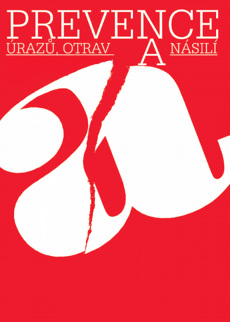BOLŠEVNÍK VELKOLEPÝ A FOTODERMATITIDA
HOGWEED AND PHOTODERMATITIS
Klára Cupalová
Jihočeská univerzita v Českých Budějovicích, Zdravotně sociální fakulta, katedra radiologie a toxikologie
Korespondenční autor: Klára Cupalová (Klara-c@email.cz)
ISSN 1804-7858 (On-line)
Full verze:
Published online: 15. 6. 2006
Summary
The hogweed (Heracleum mantegazzianum) is a plant of the family Apiaceae, which also includes for example the parsley or carrot. As suggested by its scientific name, it is characterized by its big growth, which may be as high as 4 m. The hogweed is autochthonous in Caucasus and South-East Asia, and from there it expanded to Europe, England, Canada and USA as a peculiar plant grown in gardens. Thanks to its resistance and invasive nature, it was early able to leave decorative gardens and to escape into surrounding landscape. It rapidly became common at all the sites into which it expanded. All the parts of the plant are poisonous and the hogweed is toxic for farm animals as well as for humans. The danger of this plant, which is poisonous even on contact, inheres in the presence of phototoxic furocoumarins (psoralens). These substances cause unpleasant dermatitis and blisters, whose healing is difficult. The hogweed is dangerous for children, particularly if its juice comes into the eye.
Keywords: hogweed – invasive plant – weed – furocoumarins – psoralens – risk phototoxicity – phyto-photodermatitis – eye inflammation
Souhrn
Bolševník velkolepý (Heracleum mantegazzianum) je rostlina čeledi miříkovitých (Apiaceae), kam patří také např. petržel či mrkev. Jak jeho jméno napovídá, je pro něj charakteristická velikost, která může dosáhnout až 4 metrů. Přirozenou vlastí bolševníku je Kavkaz a jihovýchodní Asie, odkud se rozšířil do Evropy, Anglie, Kanady a Spojených států jako zahradní zvláštnost. Díky své vytrvalosti a invazivnímu chování brzy opustil okrasné zahrady a unikl do okolní přírody. Všude tam kam pronikl, velmi rychle zdomácněl. Všechny části rostliny jsou jedovaté a bolševník je toxický pro hospodářská zvířata i pro člověka. Nebezpečí této již na dotek jedovaté rostliny spočívá v přítomnosti fototoxických furokumarinů (psoralenů). Tyto látky způsobují nepříjemné dermatitidy a špatně se hojící puchýře. Bolševník je nebezpečný pro děti, zejména když šťáva z něj se dostane do oka.
Klíčová slova: bolševník – invazivní rostlina – plevel – furokumariny – psoraleny – nebezpečí – fototoxicita – fyto-fotodermatitida – oční zánět
Literatura
1. Booy, O. et al.: Bolševník velkolepý, Praktická příručka o biologii a kontrole invazního druhu, 2005, ISBN: 87–7903–214–1, http://www.giant-alien.dk
2. Camm, E., Buck, H.W., Mitchell, J.C.: Phytophotodermatitis from Heracleum mantegazzianum. Contact Dermatitis. 2(2): 68–72, 1976.
3. Dissemond, J.: When the sun burns. Hands off hogweed! [Article in German] MMW Fortschr. Med. 147(31–32): 57, 2005.
4. Drever, J.C., Hunter, J.A.: Giant hogweed dermatitis. Scott. Med. J. 15(9): 315–319, 1970.
5. Drever, J.C., Hunter, J.A.: Hazards of giant hogweed. Br. Med. J. 3(714): 109, 1970.
6. Lagey, K., Duinslaeger, L., Vanderkelen, A:. Burns induced by plants. Burns. 21(7): 542–543, 1995.
7. McGovern, T.W., Barkley, T.M.: Botanical briefs: giant hogweed – Heracleum mantegazzianum. Sommier & Levier. Cutis 65(2): 71–72, 2000.
8. Moravcová, J. Biologicky aktivní přírodní látky, Praha 2003, http://www.vscht.cz/…l2003-01.pdf
9. Pira, E., Romano, C., Sulotto, F., Pavan, I., Monaco, E.: Heracleum mantegazzianum growth phases and furocoumarin content. Contact Dermatitis. 21(5): 300–303, 1989.
10. Prinz, V.L., Koster, H.: Report on 3 cases of toxic phytophotodermatitis due to Heracleum mantegazzianum (giant cow parsnip) [Article in German] Dermatos. Monatsschr. 162(11): 88188–6, 1976.
11. Walker, N.F., Hulme, P.E., Hoelzel, A.R.: Population genetics of an invasive species, Heracleum mantegazzianum: implications for the role of life history, demographics and independent introductions. Mol. Ecol. 12(7): 1747–1756, 2003.
